Deborah J. Ross's Blog, page 94
October 17, 2017
Horse Fodder and Other Incredibly Cool Science Stuff
Grazing horses on better pasturesAnnual grasses offer options during summer slump
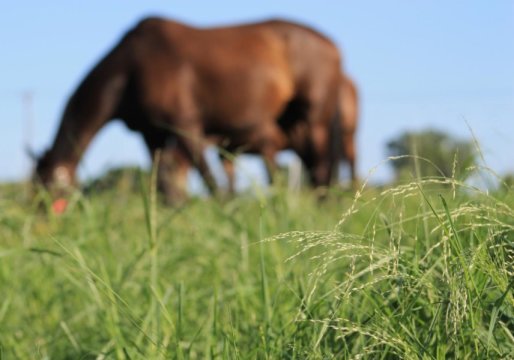
Sudangrass and sorghum-sudangrass showed the greatest yields and regrew the most after grazing. Siberian millet was the lowest yielding grass. Horses most preferred the annual cool-season ryegrass, but among the warm-season grasses, they highly preferred teff and sudangrass. All of the grasses were found to supply adequate nutrition for horses.
Citrus fruit peel: Potential alternative to mosquito control discovered

The essential oils were extracted in large amounts from the peel of a fruit similar to an orange, which is available throughout many countries in the world. With such ease of access and productions of the oils, it could potentially be used in areas which have little or no access to an alternative.Believed to be the first ever example of such an experiment, it was found that the essentials oils were highly effective in mosquitocidal activity on the larvae, leading researchers to conclude it could be used as an eco-friendly alternative in mosquitoes control programs.
Bizarre Dwarf Planet Haumea Has Rings
"We started to see something weird in the light curve," Santos Sanz said. The light dimmed just before and after Haumea passed in front of the star, as if something else were obscuring it. "I remember that José Luis, from the first [moments], said, 'OK, this could be a ring,'" Santos Sanz said. Months of scrutiny bore out the scientists' initial suspicions: The results suggest that Haumea's equator is encircled by a 43-mile-wide (70 km) ring of debris located about 620 miles (1,000 km) from the dwarf planet's surface.
Ancient Mars Likely Had Deep-Sea Hydrothermal Vents
"Ancient, deep-water hydrothermal deposits in Eridania basin represent a new category of astrobiological target on Mars," researchers said in the statement. "Eridania seafloor deposits are not only of interest for Mars exploration, they represent a window into early Earth."

Sudangrass and sorghum-sudangrass showed the greatest yields and regrew the most after grazing. Siberian millet was the lowest yielding grass. Horses most preferred the annual cool-season ryegrass, but among the warm-season grasses, they highly preferred teff and sudangrass. All of the grasses were found to supply adequate nutrition for horses.
Citrus fruit peel: Potential alternative to mosquito control discovered

The essential oils were extracted in large amounts from the peel of a fruit similar to an orange, which is available throughout many countries in the world. With such ease of access and productions of the oils, it could potentially be used in areas which have little or no access to an alternative.Believed to be the first ever example of such an experiment, it was found that the essentials oils were highly effective in mosquitocidal activity on the larvae, leading researchers to conclude it could be used as an eco-friendly alternative in mosquitoes control programs.
Bizarre Dwarf Planet Haumea Has Rings

"We started to see something weird in the light curve," Santos Sanz said. The light dimmed just before and after Haumea passed in front of the star, as if something else were obscuring it. "I remember that José Luis, from the first [moments], said, 'OK, this could be a ring,'" Santos Sanz said. Months of scrutiny bore out the scientists' initial suspicions: The results suggest that Haumea's equator is encircled by a 43-mile-wide (70 km) ring of debris located about 620 miles (1,000 km) from the dwarf planet's surface.
Ancient Mars Likely Had Deep-Sea Hydrothermal Vents

"Ancient, deep-water hydrothermal deposits in Eridania basin represent a new category of astrobiological target on Mars," researchers said in the statement. "Eridania seafloor deposits are not only of interest for Mars exploration, they represent a window into early Earth."

Published on October 17, 2017 01:00
Incredbly
Grazing horses on better pasturesAnnual grasses offer options during summer slump

Sudangrass and sorghum-sudangrass showed the greatest yields and regrew the most after grazing. Siberian millet was the lowest yielding grass. Horses most preferred the annual cool-season ryegrass, but among the warm-season grasses, they highly preferred teff and sudangrass. All of the grasses were found to supply adequate nutrition for horses.
Citrus fruit peel: Potential alternative to mosquito control discovered

The essential oils were extracted in large amounts from the peel of a fruit similar to an orange, which is available throughout many countries in the world. With such ease of access and productions of the oils, it could potentially be used in areas which have little or no access to an alternative.Believed to be the first ever example of such an experiment, it was found that the essentials oils were highly effective in mosquitocidal activity on the larvae, leading researchers to conclude it could be used as an eco-friendly alternative in mosquitoes control programs.
Bizarre Dwarf Planet Haumea Has Rings
"We started to see something weird in the light curve," Santos Sanz said. The light dimmed just before and after Haumea passed in front of the star, as if something else were obscuring it. "I remember that José Luis, from the first [moments], said, 'OK, this could be a ring,'" Santos Sanz said. Months of scrutiny bore out the scientists' initial suspicions: The results suggest that Haumea's equator is encircled by a 43-mile-wide (70 km) ring of debris located about 620 miles (1,000 km) from the dwarf planet's surface.
Ancient Mars Likely Had Deep-Sea Hydrothermal Vents
"Ancient, deep-water hydrothermal deposits in Eridania basin represent a new category of astrobiological target on Mars," researchers said in the statement. "Eridania seafloor deposits are not only of interest for Mars exploration, they represent a window into early Earth."

Sudangrass and sorghum-sudangrass showed the greatest yields and regrew the most after grazing. Siberian millet was the lowest yielding grass. Horses most preferred the annual cool-season ryegrass, but among the warm-season grasses, they highly preferred teff and sudangrass. All of the grasses were found to supply adequate nutrition for horses.
Citrus fruit peel: Potential alternative to mosquito control discovered

The essential oils were extracted in large amounts from the peel of a fruit similar to an orange, which is available throughout many countries in the world. With such ease of access and productions of the oils, it could potentially be used in areas which have little or no access to an alternative.Believed to be the first ever example of such an experiment, it was found that the essentials oils were highly effective in mosquitocidal activity on the larvae, leading researchers to conclude it could be used as an eco-friendly alternative in mosquitoes control programs.
Bizarre Dwarf Planet Haumea Has Rings

"We started to see something weird in the light curve," Santos Sanz said. The light dimmed just before and after Haumea passed in front of the star, as if something else were obscuring it. "I remember that José Luis, from the first [moments], said, 'OK, this could be a ring,'" Santos Sanz said. Months of scrutiny bore out the scientists' initial suspicions: The results suggest that Haumea's equator is encircled by a 43-mile-wide (70 km) ring of debris located about 620 miles (1,000 km) from the dwarf planet's surface.
Ancient Mars Likely Had Deep-Sea Hydrothermal Vents

"Ancient, deep-water hydrothermal deposits in Eridania basin represent a new category of astrobiological target on Mars," researchers said in the statement. "Eridania seafloor deposits are not only of interest for Mars exploration, they represent a window into early Earth."

Published on October 17, 2017 01:00
October 13, 2017
Short Book Reviews: A Magical Bed and Breakfast, with Occasional Werewolf
The Innkeeper Chronicles, Volume One, by Ilona Andrews, Subterranean Press, 2017. (Clean Sweep, Sweep in Peace, One Fell Sweep).
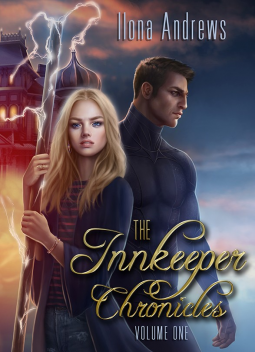
This husband and wife writing team, using her name, Ilona Andrews, obviously had a terrifically good time with their free, serialized urban fantasy “Innkeeper” novels.
A charming young innkeeper, Dina Demille (from the innkeeper family of the same name), is like any other innkeeper bonded to her sentient and extremely powerful and magical inn, Gertrude Hunt. Scattered over Earth, these inns provide neutral havens for interstellar creatures. Dina is dedicated to the safety and comfort of her guests, many of whom would otherwise be at each other’s throats. Predictably, events and blood-thirsty, revenge-driven and otherwise unlaw-abiding forces collude to interrupt that peace.
Although blessed with supernatural powers within the inn’s grounds, Dina becomes ordinary the farther she gets from home. To meet the various threats, she therefore acquires allies and (sometimes would-be lovers) in the form of sexy werewolves and equally sexy vampires, but the real charm of these stories lies in her courage and resourcefulness, coupled with a not inconsiderable thread of whimsy.
Humor, romance, and suspense are nicely balanced against each other, and the central characters are so appealing, I was sad when I finished the last page. (Not to be too sad: the Innkeeper website assures me there will be more! Check it out here: http://innkeeper.ilona-andrews.com/)

This husband and wife writing team, using her name, Ilona Andrews, obviously had a terrifically good time with their free, serialized urban fantasy “Innkeeper” novels.
A charming young innkeeper, Dina Demille (from the innkeeper family of the same name), is like any other innkeeper bonded to her sentient and extremely powerful and magical inn, Gertrude Hunt. Scattered over Earth, these inns provide neutral havens for interstellar creatures. Dina is dedicated to the safety and comfort of her guests, many of whom would otherwise be at each other’s throats. Predictably, events and blood-thirsty, revenge-driven and otherwise unlaw-abiding forces collude to interrupt that peace.
Although blessed with supernatural powers within the inn’s grounds, Dina becomes ordinary the farther she gets from home. To meet the various threats, she therefore acquires allies and (sometimes would-be lovers) in the form of sexy werewolves and equally sexy vampires, but the real charm of these stories lies in her courage and resourcefulness, coupled with a not inconsiderable thread of whimsy.
Humor, romance, and suspense are nicely balanced against each other, and the central characters are so appealing, I was sad when I finished the last page. (Not to be too sad: the Innkeeper website assures me there will be more! Check it out here: http://innkeeper.ilona-andrews.com/)

Published on October 13, 2017 01:00
October 12, 2017
Martian Sand and Other Wonders
Ancient Asteroid Impact Exposes the Moon's Interior
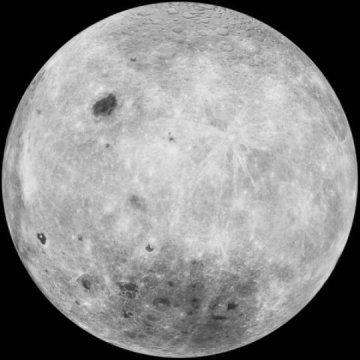
"The mantle of the Earth is made mostly of a mineral called olivine, and the assumption is usually that all planets are like the Earth," said Jay Melosh, Distinguished Professor of Earth, Atmospheric and Planetary Sciences at Purdue University, who led the study. "But when we look at the spectral signature of rocks exposed deep below the moon's surface, we don't see olivine; we see orthopyroxene."Around 4 billion years ago, an asteroid collided with the moon and created the largest and deepest impact on the moon: the South Pole-Aitken basin. The collision exposed lunar mantle in the basin and splashed up material onto the far side of the moon.
Where Does the Sand Come From?

Discovered in images from the Context Camera, this region exhibits dark material that is being eroded from dark layers in the bedrock of a semicircular depression near the boundary of the Southern highlands and the Northern lowlands. Downslope lineations support the notion that these dark sediments are derived locally, and did not accumulate here by coincidence because of the winds.Sand grains can also roll along the ground as they are blown by the wind, and they are also jostled by other sand gains that are similarly flying across the surface. All of these repeated impacts tend to wear down the sand grains, smoothing them into a more spherical shape and breaking off small fragments that supply the vast dust deposits of Mars. This process (known as comminution) ultimately destroys sand grains and limits the length of time that the particles exist. The fact that we see active sand dunes on Mars today requires that sand particles must be resupplied to replace the grains that are lost over time. Where are the modern day sources of sand on Mars?
Best Way to Recognize Emotions in Others: Listen

Across all five experiments, individuals who only listened without observing were able, on average, to identify more accurately the emotions being experienced by others. The one exception was when subjects listened to the computerized voices, which resulted in the worst accuracy of all.
Jupiter and Two of Its Biggest Moons
Io and Europa are two of Jupiter's four Galilean moons, which are so named because famed Italian astronomer Galileo Galilei discovered them back in 1610. (The other two Galilean satellites are Callisto and Ganymede.) Io is the most volcanic object in the solar system, and astrobiologists regard the ocean-harboring Europa as one of the best bets to host life beyond Earth.
Unusual Mountain Ahuna Mons on Asteroid Ceres

Ahuna Mons is the largest mountain on the largest known asteroid in our Solar System, Ceres, which orbits our Sun in the main asteroid belt between Mars and Jupiter. Ahuna Mons, though, is like nothing that humanity has ever seen before. For one thing, its slopes are garnished not with old craters but young vertical streaks. One hypothesis holds that Ahuna Mons is an ice volcano that formed shortly after a large impact on the opposite side of the dwarf planet loosened up the terrain through focused seismic waves. The bright streaks may be high in reflective salt, and therefore similar to other recently surfaced material such as visible in Ceres' famous bright spots.


"The mantle of the Earth is made mostly of a mineral called olivine, and the assumption is usually that all planets are like the Earth," said Jay Melosh, Distinguished Professor of Earth, Atmospheric and Planetary Sciences at Purdue University, who led the study. "But when we look at the spectral signature of rocks exposed deep below the moon's surface, we don't see olivine; we see orthopyroxene."Around 4 billion years ago, an asteroid collided with the moon and created the largest and deepest impact on the moon: the South Pole-Aitken basin. The collision exposed lunar mantle in the basin and splashed up material onto the far side of the moon.
Where Does the Sand Come From?

Discovered in images from the Context Camera, this region exhibits dark material that is being eroded from dark layers in the bedrock of a semicircular depression near the boundary of the Southern highlands and the Northern lowlands. Downslope lineations support the notion that these dark sediments are derived locally, and did not accumulate here by coincidence because of the winds.Sand grains can also roll along the ground as they are blown by the wind, and they are also jostled by other sand gains that are similarly flying across the surface. All of these repeated impacts tend to wear down the sand grains, smoothing them into a more spherical shape and breaking off small fragments that supply the vast dust deposits of Mars. This process (known as comminution) ultimately destroys sand grains and limits the length of time that the particles exist. The fact that we see active sand dunes on Mars today requires that sand particles must be resupplied to replace the grains that are lost over time. Where are the modern day sources of sand on Mars?
Best Way to Recognize Emotions in Others: Listen

Across all five experiments, individuals who only listened without observing were able, on average, to identify more accurately the emotions being experienced by others. The one exception was when subjects listened to the computerized voices, which resulted in the worst accuracy of all.
Jupiter and Two of Its Biggest Moons

Io and Europa are two of Jupiter's four Galilean moons, which are so named because famed Italian astronomer Galileo Galilei discovered them back in 1610. (The other two Galilean satellites are Callisto and Ganymede.) Io is the most volcanic object in the solar system, and astrobiologists regard the ocean-harboring Europa as one of the best bets to host life beyond Earth.
Unusual Mountain Ahuna Mons on Asteroid Ceres

Ahuna Mons is the largest mountain on the largest known asteroid in our Solar System, Ceres, which orbits our Sun in the main asteroid belt between Mars and Jupiter. Ahuna Mons, though, is like nothing that humanity has ever seen before. For one thing, its slopes are garnished not with old craters but young vertical streaks. One hypothesis holds that Ahuna Mons is an ice volcano that formed shortly after a large impact on the opposite side of the dwarf planet loosened up the terrain through focused seismic waves. The bright streaks may be high in reflective salt, and therefore similar to other recently surfaced material such as visible in Ceres' famous bright spots.

Published on October 12, 2017 01:00
October 10, 2017
"Famous Local Author"
Our county celebrates "Open Studios Tours," which are just that: a time when artists hold open house, displaying their paintings, sculptures, jewelry, and so forth, chatting with the folks who drop by, guided by distinctive fluorescent-green signs. Some days during the season it seems as if everyone is either at an event or on their way to or from one.
This year, my neighbor -- musician and songwriter Karie Hillery -- timed her fall music bash to coincide with the opening weekend. Her place includes a small natural amphitheater, backed by the river and shaded by the redwoods. Besides her own wonderful music and that of her musician friends, she provided space near the entrance for "artists alley." A small collection of us set up shop: a potter advertising her classes (and demonstrating crochet), a mandala artist, a couple displaying lamps made from found objects, a jeweler, a couple of tables with CDs by the performers...and me, the local author.
I re-created the sort of display you might find in "authors alley" at a science fiction convention, a table draped with a beautiful shawl, upon which I arranged as many books as would tastefully fit, everything from the anthology containing my first short story sale (the first volume of Sword and Sorceress) and my first published novel (Jaydium) to Book View Cafe's Nevertheless She Persisted, edited by Mindy Klasky, in which I have a story. I stocked "Autographed Copy" stickers and cards. Then I set up my laptop and proceeded to demonstrate my work...writing away on the novel-in-progress.
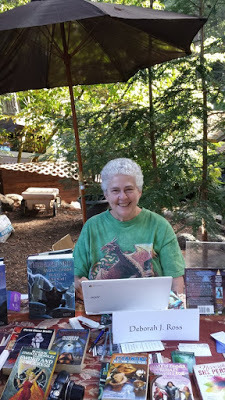
A good time was had by all.
This year, my neighbor -- musician and songwriter Karie Hillery -- timed her fall music bash to coincide with the opening weekend. Her place includes a small natural amphitheater, backed by the river and shaded by the redwoods. Besides her own wonderful music and that of her musician friends, she provided space near the entrance for "artists alley." A small collection of us set up shop: a potter advertising her classes (and demonstrating crochet), a mandala artist, a couple displaying lamps made from found objects, a jeweler, a couple of tables with CDs by the performers...and me, the local author.
I re-created the sort of display you might find in "authors alley" at a science fiction convention, a table draped with a beautiful shawl, upon which I arranged as many books as would tastefully fit, everything from the anthology containing my first short story sale (the first volume of Sword and Sorceress) and my first published novel (Jaydium) to Book View Cafe's Nevertheless She Persisted, edited by Mindy Klasky, in which I have a story. I stocked "Autographed Copy" stickers and cards. Then I set up my laptop and proceeded to demonstrate my work...writing away on the novel-in-progress.

A good time was had by all.

Published on October 10, 2017 01:00
October 9, 2017
In Troubled Times: Surviving Exhaustion
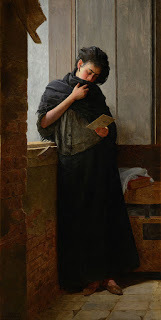 In previous posts in this series, I’ve written about emotional sobriety, feeling overwhelmed, and finding a personal sanctuary. Now I’d like to talk more about the concrete things we can do to keep our emotional and spiritual balance during the difficult, terrifying, and outrage-evoking recent months.
In previous posts in this series, I’ve written about emotional sobriety, feeling overwhelmed, and finding a personal sanctuary. Now I’d like to talk more about the concrete things we can do to keep our emotional and spiritual balance during the difficult, terrifying, and outrage-evoking recent months.For me the first step is always admitting that what I have been doing isn’t working. I can get absorbed in one dreadful news story after the other, and with each round I lose more perspective and calm. My adrenaline levels get progressively higher. Sometimes – often! – it seems as if nothing else is happening in my life except reacting to yet another threat to the people, organizations, and principle that are important to me. Old wounds re-open; the ghosts of family tragedies (like the pogroms my father survived as a boy) re-awaken. I fear for my Jewish family and my queer daughters and sister and my trans daughter-in-law, for my black, Muslim, and Hispanic friends. I despair for the future of the entire planet. In other words, I need help.
Sometimes all that’s necessary is for me to admit that matters have gotten out of hand. Then I can scale back on my news consumption enough to think clearly what actions I would like to take. And especially what would be enough for the moment so that I can leave the topic and focus on other aspects of my life – my family, my writing, my local community, the beautiful redwood forest that cloaks the hills outside my windows. Playing classical music on my mother’s piano. Knitting hats for charities in poor areas of the country and world. Cuddling with the cats.
Recently I have noticed how those times of relative sanity come to a screeching halt. There are always new reasons – excuse me, Reasons. Like a hurricane or three. I’ve seen references to “outrage fatigue” but I suspect what is happening is outrage overlap. There isn’t sufficient time in between to return to balance and stay there, catching our breath, before something new and dreadful reels us in.
A recent article on the American Friends Service Committee blog suggests ways to stay strong “when the news is exhausting.” The folks at AFSC know a thing or two about coming from a place of compassion and peace during difficult times. A Quaker-founded organization, they’ve been around since 1917. After WW I, they set up kitchens to feed hungry children in Germany and Austria. During the 1930s and through World War II, AFSC helped refugees escape from Nazi Germany, provided relief for children on both sides of the Spanish Civil War, and provided relief to refugees in Vichy France. (I had friends who worked in Austria after WW II through AFSC.) They received the Nobel Peace Prize in 1947. So I’m apt to listen to their suggestions:
1. Cut back on news. Eliminate or restrict the number of times per day you check social media. This in itself isn’t new, and I’ve done these things successfully, but not the strategy of using printed news instead of internet. Print is slower and often more thoughtful, especially long-form journalism. Someone has had a chance to think what all this means before publishing it. Plus, the delay means an extra buffer between events and reaction. I think of it as an ongoing exercise in faith that if I needto know about what’s going on in the world, I’ll find out.2. Focus on the issues that matter most to you. I notice I do this, too, although the reminder is always welcome. I can’t sustain being outraged about every single horrible thing. I do better when I prioritize, picking the top few issues and following them more closely. And it’s not essential that my friends and I have the same top issues. For example, our neighbor is Native American, and the crisis at Standing Rock was very important to him; he knew people who were directly involved. I acted as an ally, while he was less concerned with queer and trans rights, one of my primary issues.3. Read something else! I love this suggestion. I would add, Listen to something besides news and talk shows when you’re driving. During the election, I loaded all 6 CDs of the Howard Shore music for Peter Jackson’s The Hobbit movies into the player in my car and listened to them over and over. Although there are dramatic passages, the flowing, narrative quality of the music transported me to, well, Middle Earth. I was a much nicer driver as a result. My current refuge is audio books of Jane Austen novels. I highly recommend a mini-vacation at Pemberley or Mansfield Park. When I return, I am a saner person, too.
What strategies help you get through these days? Books, music, refreshments of the spirit?

Published on October 09, 2017 01:00
October 6, 2017
Short Book Reviews: A Delicious Victorian Mashup Mystery
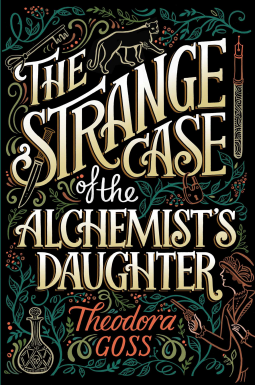 The Strange Case of the Alchemist's Daughter, by Theodora Goss, Saga Press is a delightful amalgam and homage to characters dear to lovers of Victorian-era literature, including Sir Arthur Conan Doyle, Robert Lewis Stevenson, Mary Shelley, Nathaniel Hawthorne, and Bram Stoker.
The Strange Case of the Alchemist's Daughter, by Theodora Goss, Saga Press is a delightful amalgam and homage to characters dear to lovers of Victorian-era literature, including Sir Arthur Conan Doyle, Robert Lewis Stevenson, Mary Shelley, Nathaniel Hawthorne, and Bram Stoker. First of all – Theodora Goss. If you don’t know her breath-takingly wonderful short fiction, drop everything and read some. We’ll wait. Okay, ready to talk about her novel?
We begin with young, well-mannered, brilliant Mary Jekyll – yes, that Jekyll, her father – alone in his old house (except for the ever-faithful housekeeper, Mrs. Poole) and at the end of her financial rope. Chance and the hope of a small bequest brings her into contact with her hellfire and rapscallion adolescent half-sister, Diana Hyde. Before long, the two team up with Sherlock Holmes and Dr. Watson, hot on the trail of whoever is murdering young women in the alleys of London and surgically removing various body parts. The mystery brings them into contact with Catherine Moreau (thatMoreau, a panther turned woman), Renfield, Justine Frankenstein (who is so gentle, she’s a vegetarian pacifist), and “poison lady” Beatrice Rappaccini, among others.
The true delight of the novel, however, arises from the interruptions by the characters themselves, often arguing over who should tell which part of the story and how it should be told. At first, we do not know who all these women are, but as the tale unfolds, we see their own experiences and personalities reflected in their sometimes witty, sometimes impudent, but always affectionate squabbles.

Published on October 06, 2017 01:00
September 29, 2017
Short Book Reviews: Steampunk Airship Warfare with a Woman Captain
 The Guns Above, by Robin Bennis (Tor)
The Guns Above, by Robin Bennis (Tor)Just wonderful! This steampunk military drama incorporates brilliantly realized airship technology, with the same level of loving detail and respect for the resourcefulness of the people on those ships as found in Patrick O’Brien’s novels, with international intrigue, military maneuvers and derring-do.
Josette Dupre, one of the few women aviators in a made-up European country, became captain of her own airship almost by accident by being the highest-ranking surviving officer after a disastrous battle. Her troubles are only beginning, though, for she is sent on patrol with a crew that doubts her abilities, an experimental airship that is likely a death trap, and a dandified observer with a secret mission to prove women have no place in the air corps.
Josette has a complex, appealing blend of confidence based on experience, keen common sense, bravery, and self-doubt. The book is nicely paced, full of exciting twists, and intriguing technology. As with the O’Brien books, I was struck by the level of scientific, engineering, and mathematical knowledge of the airmen. I’m not a military buff, but I found the action engrossing and the characters appealing. The sly humor, aimed mostly at the dandified aristocracy, added a wonderful touch. I found the geography and political history of the various fictional countries unnecessary and confusing at first, detracting from the dramatic action, and would have preferred closer parallels with existing European states. Otherwise, this was a fun, lively, and ultimately satisfying read.

Published on September 29, 2017 01:00
September 22, 2017
Short Book Reviews: On the Devil's Road with Laura Anne Gilman
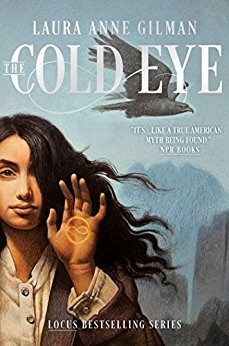 I loved Gilman’s take on “the Weird Wild West” since I read the first volume of this series Silver on the Road). In this world, the Devil presides over “The Territory” (roughly the southwest of the present US), imposing order and protecting the land and its inhabitants from both chaotic magic and incursions of Americans bent on the kind of exploitation and industrialization that has in our world destroyed so much wilderness. Needless to say, he isn’t what we’d think of as evil, but he is powerful and mysterious.
I loved Gilman’s take on “the Weird Wild West” since I read the first volume of this series Silver on the Road). In this world, the Devil presides over “The Territory” (roughly the southwest of the present US), imposing order and protecting the land and its inhabitants from both chaotic magic and incursions of Americans bent on the kind of exploitation and industrialization that has in our world destroyed so much wilderness. Needless to say, he isn’t what we’d think of as evil, but he is powerful and mysterious.Young Isobel has grown up in Flood, the Devil’s headquarters, and in the first volume has embarked upon a life on the road as his Left Hand, a sort of one-woman magical police force, along with her trail mentor, Gabriel. They had various exciting adventures, some involving magicians that were once human but through their craving for magical power have become something else.
Now, in The Cold Eye, new challenges greet them, beginning with a series of unexplained earthquakes, the appearance of supernatural animals bearing enigmatic warnings, and a host of fascinating but questionable characters. This second volume is not “more of the same,” however. Gilman takes the story up a notch by delving into the very nature of magic, something Isobel is steeped in but does not yet understand. As Isobel gradually comes to realize that she is more than an ordinary human chosen for an extraordinary mission, we ourselves as readers are brought into a world of experiences beyond our own, deftly portrayed by Gilman’s consummate skill as an author. The journey is fascinating, baffling, exhilarating, and fearsome; more than that, it left me wanting more.

Published on September 22, 2017 01:00
September 15, 2017
Short Book Reviews: Coming of Age in a Post-Atomic Alternate World
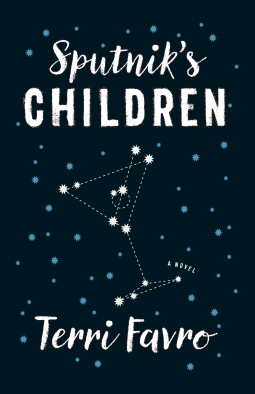 The initial premise of this novel is an appealing one: the woman creator of the raunchy, underground-style superhero comic, Sputnik Girl, may actually be the heroine of her own story, transported from an alternate world. The operant word is “may” because Debbie Reynolds Biondi is so befuddled with tranquilizers, booze, and casual sex, she’s anything but a reliable narrator.
The initial premise of this novel is an appealing one: the woman creator of the raunchy, underground-style superhero comic, Sputnik Girl, may actually be the heroine of her own story, transported from an alternate world. The operant word is “may” because Debbie Reynolds Biondi is so befuddled with tranquilizers, booze, and casual sex, she’s anything but a reliable narrator. As the story unfolds, it simultaneously wanders from that premise as the true history of Sputnik Girl is revealed. Cataclysmic events like the testing and deployment of atomic bombs have fractured off alternative, parallel worlds from our own. In Atomic Mean Time, Debbie, her family, and friends, live in a polluted, increasingly totalitarian world that is careening toward thermonuclear catastrophe. As Earth Mean Time Debbie delves ever deeper into Sputnik Girl’s origin story, her own history unfolds.
Touches of humor abound, as do dark moments. The parallel-but-different details (like Richard Nixon committing suicide in Atomic Mean Time, but the Beatles were just as popular) were well done, but personal events like Debbie being molested as an adolescent didn’t play out emotionally as believably.
In the end, Sputnik Girl is rendered irrelevant to her own story. It’s not about finding the grit to transcend the horror of a dystopian, heart-breakingly unjust world, the way a superhero origin story works, but about sacrificing your own comfort and happiness for a greater good and then proceeding on to a rootless, emotionally numb life when no one but you remembers. I think the key to my dissatisfaction lies in the absence of grappling with personal trauma in the midst of a global tragedy. For me, the mirroring of internal and external struggle give a story resonance. That objection aside, the book moves along briskly, with nuggets of delight and despair interspersed with plot twists. Others may not feel as I do, and will enjoy without reservation this nicely paced, slyly humorous atomic tale.

Published on September 15, 2017 01:00



